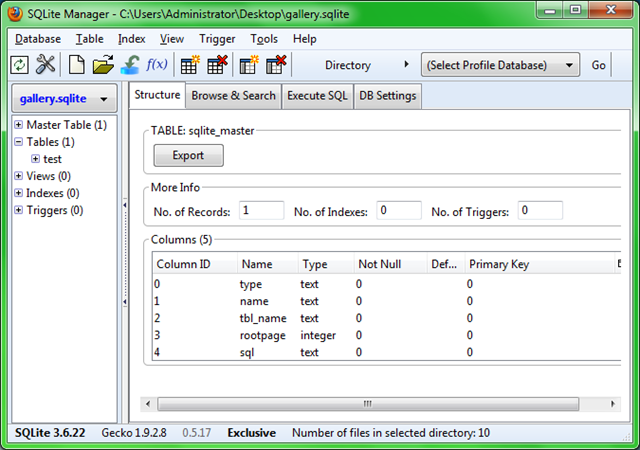編輯:關於Android編程
WindowManager繼承自ViewManager,主要用來管理窗口的一些狀態、屬性、view增加、刪除、更新、窗口順序、消息收集和處理等。應用獲取方法:
Context.getSystemService(Context.WINDOW_SERVICE);
表示頂級窗口,也就是主窗口,它有兩個實現類,PhoneWindow和MidWindow,一般的 activity對應的主要是PhoneWindow,在activity中經常使用的setContentView等方法就是在Window裡面實現。
從WindowManagerService角度看,一個窗口並不是Window類,而是一個View類。WindowManagerService收到用戶消息後,需要把消息派發到窗口,View類本身並不能直接接收WindowManagerService傳遞過來的消息,真正接收用戶消息的必須是IWindow類,而實現IWindow類的是ViewRoot.W類,每一個W內部都包含了一個View變量。
WmS並不介意該窗口(View)是屬於哪個應用程序的,WmS會按一定的規則判斷哪個窗口處於活動狀態,然後把用戶消息給W類,W類再把用戶消息傳遞給內部的View變量,剩下的消息處理就由View對象完成。
WindowManager的LayoutParams中窗口類型與定義:
frameworks\base\core\java\android\view\WindowManager.java
/**
* Start of window types that represent normal application windows.
*
* ZMS:首個普通應用窗口
*/
public static final int FIRST_APPLICATION_WINDOW = 1;
/**
* Window type: an application window that serves as the "base" window
* of the overall application; all other application windows will
* appear on top of it.
* In multiuser systems shows only on the owning user's window.
*
* ZMS:基礎窗口-其他應用窗口會顯示在此窗口之上
*/
public static final int TYPE_BASE_APPLICATION = 1;
/**
* Window type: a normal application window. The {@link #token} must be
* an Activity token identifying who the window belongs to.
* In multiuser systems shows only on the owning user's window.
*
* ZMS:普通應用窗口-此窗口需要歸屬於Activity,多用戶系統中僅僅在對應用戶的窗口中顯示
*/
public static final int TYPE_APPLICATION = 2;
/**
* Window type: special application window that is displayed while the
* application is starting. Not for use by applications themselves;
* this is used by the system to display something until the
* application can show its own windows.
* In multiuser systems shows on all users' windows.
*
* ZMS:應用啟動窗口-應用啟動顯示的窗口,不受應用本身控制。由系統在應用顯示應用本身的窗口之前顯示。
*/
public static final int TYPE_APPLICATION_STARTING = 3;
/**
* End of types of application windows.
*
* ZMS:終極應用窗口-所有Activity默認的窗口類型都是TYPE_APPLICATION,
* WindowManagerService在進行窗口疊加時,會動態改變應用窗口的層值,但不會大於99。
*/
public static final int LAST_APPLICATION_WINDOW = 99;
/**
* Start of types of sub-windows. The {@link #token} of these windows
* must be set to the window they are attached to. These types of
* windows are kept next to their attached window in Z-order, and their
* coordinate space is relative to their attached window.
*
* ZMS:首個子窗口-依附於父窗口。子窗口在Z軸上鄰接父窗口,且協調空間與父窗口相關。
* 子窗口是指該窗口必須要有一個父窗口,父窗口可以是一個應用類型窗口,也可以是任何其他類型的窗口。
*/
public static final int FIRST_SUB_WINDOW = 1000;
/**
* Window type: a panel on top of an application window. These windows
* appear on top of their attached window.
*
* ZMS:應用窗口子窗口-PopupWindow的默認類型
*/
public static final int TYPE_APPLICATION_PANEL = FIRST_SUB_WINDOW;
/**
* Window type: window for showing media (such as video). These windows
* are displayed behind their attached window.
*
* ZMS:用來顯示Media的窗口
*/
public static final int TYPE_APPLICATION_MEDIA = FIRST_SUB_WINDOW+1;
/**
* Window type: a sub-panel on top of an application window. These
* windows are displayed on top their attached window and any
* {@link #TYPE_APPLICATION_PANEL} panels.
*
* ZMS:TYPE_APPLICATION_PANEL的子窗口
*/
public static final int TYPE_APPLICATION_SUB_PANEL = FIRST_SUB_WINDOW+2;
/** Window type: like {@link #TYPE_APPLICATION_PANEL}, but layout
* of the window happens as that of a top-level window, not
* as a child of its container.
*
* ZMS:OptionMenu、ContextMenu的默認類型
*/
public static final int TYPE_APPLICATION_ATTACHED_DIALOG = FIRST_SUB_WINDOW+3;
/**
* Window type: window for showing overlays on top of media windows.
* These windows are displayed between TYPE_APPLICATION_MEDIA and the
* application window. They should be translucent to be useful. This
* is a big ugly hack so:
* @hide
*
* ZMS:TYPE_APPLICATION_MEDIA的重影窗口,顯示在TYPE_APPLICATION_MEDIA和應用窗口之間
*/
public static final int TYPE_APPLICATION_MEDIA_OVERLAY = FIRST_SUB_WINDOW+4;
/**
* End of types of sub-windows.
*
* ZMS:最後一個子窗口-創建子窗口時,客戶端可以指定窗口類型介於1000-1999之間,
* 而WindowManagerService在進行窗口疊加時,會動態調整層值。
*/
public static final int LAST_SUB_WINDOW = 1999;
/**
* Start of system-specific window types. These are not normally
* created by applications.
*
* ZMS:首個系統窗口-系統窗口,系統窗口不需要對應任何Activity,也不需要有父窗口,
* 對於應用程序而言,理論上是無法創建系統窗口的,因為所有的應用程序都沒有這個權限,
* 然而系統進程卻可以創建系統窗口。
*/
public static final int FIRST_SYSTEM_WINDOW = 2000;
/**
* Window type: the status bar. There can be only one status bar
* window; it is placed at the top of the screen, and all other
* windows are shifted down so they are below it.
* In multiuser systems shows on all users' windows.
*
* ZMS:狀態欄窗口,層值2000。
*/
public static final int TYPE_STATUS_BAR = FIRST_SYSTEM_WINDOW;
/**
* Window type: the search bar. There can be only one search bar
* window; it is placed at the top of the screen.
* In multiuser systems shows on all users' windows.
*
* ZMS:搜索條窗口,層值2001。
*/
public static final int TYPE_SEARCH_BAR = FIRST_SYSTEM_WINDOW+1;
/**
* Window type: phone. These are non-application windows providing
* user interaction with the phone (in particular incoming calls).
* These windows are normally placed above all applications, but behind
* the status bar.
* In multiuser systems shows on all users' windows.
*
* ZMS:來電顯示窗口
*/
public static final int TYPE_PHONE = FIRST_SYSTEM_WINDOW+2;
/**
* Window type: system window, such as low power alert. These windows
* are always on top of application windows.
* In multiuser systems shows only on the owning user's window.
*
* ZMS:警告對話框
*/
public static final int TYPE_SYSTEM_ALERT = FIRST_SYSTEM_WINDOW+3;
/**
* Window type: keyguard window.
* In multiuser systems shows on all users' windows.
* @removed
*
* ZMS:鎖屏
*/
public static final int TYPE_KEYGUARD = FIRST_SYSTEM_WINDOW+4;
/**
* Window type: transient notifications.
* In multiuser systems shows only on the owning user's window.
*
* ZMS:Toast窗口
*/
public static final int TYPE_TOAST = FIRST_SYSTEM_WINDOW+5;
/**
* Window type: system overlay windows, which need to be displayed
* on top of everything else. These windows must not take input
* focus, or they will interfere with the keyguard.
* In multiuser systems shows only on the owning user's window.
*
* ZMS:系統覆蓋窗口,顯示在所有窗口之上
*/
public static final int TYPE_SYSTEM_OVERLAY = FIRST_SYSTEM_WINDOW+6;
/**
* Window type: priority phone UI, which needs to be displayed even if
* the keyguard is active. These windows must not take input
* focus, or they will interfere with the keyguard.
* In multiuser systems shows on all users' windows.
*
* ZMS:在屏幕保護下的來電顯示窗口
*/
public static final int TYPE_PRIORITY_PHONE = FIRST_SYSTEM_WINDOW+7;
/**
* Window type: panel that slides out from the status bar
* In multiuser systems shows on all users' windows.
*
* ZMS:滑動狀態欄後出現的窗口
*/
public static final int TYPE_SYSTEM_DIALOG = FIRST_SYSTEM_WINDOW+8;
/**
* Window type: dialogs that the keyguard shows
* In multiuser systems shows on all users' windows.
*
* ZMS:鎖屏彈出的對話框
*/
public static final int TYPE_KEYGUARD_DIALOG = FIRST_SYSTEM_WINDOW+9;
/**
* Window type: internal system error windows, appear on top of
* everything they can.
* In multiuser systems shows only on the owning user's window.
*
* ZMS:系統錯誤窗口
*/
public static final int TYPE_SYSTEM_ERROR = FIRST_SYSTEM_WINDOW+10;
/**
* Window type: internal input methods windows, which appear above
* the normal UI. Application windows may be resized or panned to keep
* the input focus visible while this window is displayed.
* In multiuser systems shows only on the owning user's window.
*
* ZMS:輸入法窗口
*/
public static final int TYPE_INPUT_METHOD = FIRST_SYSTEM_WINDOW+11;
/**
* Window type: internal input methods dialog windows, which appear above
* the current input method window.
* In multiuser systems shows only on the owning user's window.
*
* ZMS:輸入法中備選框對應的窗口
*/
public static final int TYPE_INPUT_METHOD_DIALOG= FIRST_SYSTEM_WINDOW+12;
/**
* Window type: wallpaper window, placed behind any window that wants
* to sit on top of the wallpaper.
* In multiuser systems shows only on the owning user's window.
*
* ZMS:牆紙對應的窗口
*/
public static final int TYPE_WALLPAPER = FIRST_SYSTEM_WINDOW+13;
/**
* Window type: panel that slides out from over the status bar
* In multiuser systems shows on all users' windows.
*
* ZMS:滑動狀態欄後出現的面板窗口
*/
public static final int TYPE_STATUS_BAR_PANEL = FIRST_SYSTEM_WINDOW+14;
/**
* Window type: secure system overlay windows, which need to be displayed
* on top of everything else. These windows must not take input
* focus, or they will interfere with the keyguard.
*
* This is exactly like {@link #TYPE_SYSTEM_OVERLAY} except that only the
* system itself is allowed to create these overlays. Applications cannot
* obtain permission to create secure system overlays.
*
* In multiuser systems shows only on the owning user's window.
* @hide
*
* ZMS:安全系統覆蓋窗口,顯示在所有窗口之上。
*/
public static final int TYPE_SECURE_SYSTEM_OVERLAY = FIRST_SYSTEM_WINDOW+15;
/**
* Window type: the drag-and-drop pseudowindow. There is only one
* drag layer (at most), and it is placed on top of all other windows.
* In multiuser systems shows only on the owning user's window.
* @hide
*
* ZMS:拖動放開窗口。
*/
public static final int TYPE_DRAG = FIRST_SYSTEM_WINDOW+16;
/**
* Window type: panel that slides out from under the status bar
* In multiuser systems shows on all users' windows.
* @hide
*
* ZMS:滑動狀態欄顯示的面板窗口。
*/
public static final int TYPE_STATUS_BAR_SUB_PANEL = FIRST_SYSTEM_WINDOW+17;
/**
* Window type: (mouse) pointer
* In multiuser systems shows on all users' windows.
* @hide
*
* ZMS:鼠標窗口。
*/
public static final int TYPE_POINTER = FIRST_SYSTEM_WINDOW+18;
/**
* Window type: Navigation bar (when distinct from status bar)
* In multiuser systems shows on all users' windows.
* @hide
*
* ZMS:導航欄窗口
*/
public static final int TYPE_NAVIGATION_BAR = FIRST_SYSTEM_WINDOW+19;
/**
* Window type: The volume level overlay/dialog shown when the user
* changes the system volume.
* In multiuser systems shows on all users' windows.
* @hide
*
* ZMS:音量調節窗口
*/
public static final int TYPE_VOLUME_OVERLAY = FIRST_SYSTEM_WINDOW+20;
/**
* Window type: The boot progress dialog, goes on top of everything
* in the world.
* In multiuser systems shows on all users' windows.
* @hide
*
* ZMS:系統啟動進程對話框窗口-在其他內容之上。
*/
public static final int TYPE_BOOT_PROGRESS = FIRST_SYSTEM_WINDOW+21;
/**
* Window type: Fake window to consume touch events when the navigation
* bar is hidden.
* In multiuser systems shows on all users' windows.
* @hide
*
* ZMS:隱藏導航欄時消化觸摸事件窗口-當導航欄隱藏時,用來處理消費觸摸事件的模擬窗口。
*/
public static final int TYPE_HIDDEN_NAV_CONSUMER = FIRST_SYSTEM_WINDOW+22;
/**
* Window type: Dreams (screen saver) window, just above keyguard.
* In multiuser systems shows only on the owning user's window.
* @hide
*
* ZMS:LDreams屏保窗口,僅在鎖屏窗口之上。
*/
public static final int TYPE_DREAM = FIRST_SYSTEM_WINDOW+23;
/**
* Window type: Navigation bar panel (when navigation bar is distinct from status bar)
* In multiuser systems shows on all users' windows.
* @hide
*
* ZMS:導航欄面板窗口
*/
public static final int TYPE_NAVIGATION_BAR_PANEL = FIRST_SYSTEM_WINDOW+24;
/**
* Window type: Behind the universe of the real windows.
* In multiuser systems shows on all users' windows.
* @hide
*
* ZMS:全局背景窗口
*/
public static final int TYPE_UNIVERSE_BACKGROUND = FIRST_SYSTEM_WINDOW+25;
/**
* Window type: Display overlay window. Used to simulate secondary display devices.
* In multiuser systems shows on all users' windows.
* @hide
*
* ZMS:顯示重繪窗口,用來模擬第二屏顯示設備。
*/
public static final int TYPE_DISPLAY_OVERLAY = FIRST_SYSTEM_WINDOW+26;
/**
* Window type: Magnification overlay window. Used to highlight the magnified
* portion of a display when accessibility magnification is enabled.
* In multiuser systems shows on all users' windows.
* @hide
*
* ZMS:放大Overlay窗口-當輔助功能放大開啟時,用來放大高亮顯示。
*/
public static final int TYPE_MAGNIFICATION_OVERLAY = FIRST_SYSTEM_WINDOW+27;
/**
* Window type: keyguard scrim window. Shows if keyguard needs to be restarted.
* In multiuser systems shows on all users' windows.
* @hide
*
* ZMS:鎖屏遮罩窗口,在鎖屏需要重啟時顯示。
*/
public static final int TYPE_KEYGUARD_SCRIM = FIRST_SYSTEM_WINDOW+29;
/**
* Window type: Window for Presentation on top of private
* virtual display.
*
* ZMS:安全信息窗口。
*/
public static final int TYPE_PRIVATE_PRESENTATION = FIRST_SYSTEM_WINDOW+30;
/**
* Window type: Windows in the voice interaction layer.
* @hide
*
* ZMS:語音交互窗口。
*/
public static final int TYPE_VOICE_INTERACTION = FIRST_SYSTEM_WINDOW+31;
/**
* Window type: Windows that are overlaid only by an {@link
* android.accessibilityservice.AccessibilityService} for interception of
* user interactions without changing the windows an accessibility service
* can introspect. In particular, an accessibility service can introspect
* only windows that a sighted user can interact with which is they can touch
* these windows or can type into these windows. For example, if there
* is a full screen accessibility overlay that is touchable, the windows
* below it will be introspectable by an accessibility service regardless
* they are covered by a touchable window.
*
* ZMS:輔助功能窗口。
*/
public static final int TYPE_ACCESSIBILITY_OVERLAY = FIRST_SYSTEM_WINDOW+32;
/**
* M:
* Window type: Top most
* @hide
*
* ZMS:TopMost窗口。
*/
public static final int TYPE_TOP_MOST = FIRST_SYSTEM_WINDOW + 33;
/**
* End of types of system windows.
*
* ZMS:終極系統窗口。
*/
public static final int LAST_SYSTEM_WINDOW = 2999;
 Android —— 注解(Annotation)也被稱為元數據(Metadata)
Android —— 注解(Annotation)也被稱為元數據(Metadata)
之前博主講xUtils的時候,介紹過注解,不過是蜻蜓點水,有興趣的同學可以先移步到xUtils介紹2,今天我們就來詳細解剖一下Android中注解的使用。 Java注解是
 Android開發本地及網絡Mp3音樂播放器(十七)已存在歌曲歌詞下載
Android開發本地及網絡Mp3音樂播放器(十七)已存在歌曲歌詞下載
實現功能:已存在歌曲歌詞下載後續將博文,將實現已下載音樂掃描功能。因為,沒有自己的服務器,所以網絡音樂所有相關功能(包含搜索音樂、下載音樂、下載歌詞)均無法保證時效性,建
 Android SQLite詳解及示例代碼
Android SQLite詳解及示例代碼
在Android中使用SQLite數據庫的入門指南,打算分下面幾部分與大家一起分享, 1、什麼是SQLite 2、Android中使用SQLite一、什麼是SQLiteS
 android使用AsyncTask實現多線程下載實例
android使用AsyncTask實現多線程下載實例
AsyncTask不僅方便我們在子線程中對UI進行更新操作,還可以借助其本身的線程池來實現多線程任務。下面是一個使用AsyncTask來實現的多線程下載例子。01 效果圖